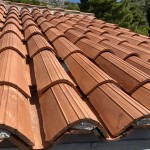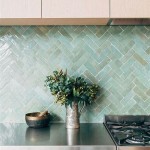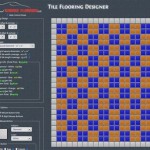Make A Splash With Pool Tiles: A Korean Perspective
Pool tiles are a vital component in pool design and construction, providing both aesthetic appeal and functional benefits. The choice of pool tiles significantly impacts the overall look and feel of a swimming pool, influencing the water color, ambiance, and perceived level of luxury. In South Korea, the demand for high-quality, aesthetically pleasing pool tiles is increasing, reflecting a growing appreciation for sophisticated outdoor living spaces and the influence of global design trends.
The Korean market for pool tiles is diverse, encompassing a range of materials, styles, and price points. This diversity reflects the varying needs and preferences of Korean homeowners, architects, and construction professionals. Understanding the nuances of this market requires an examination of the materials popular in Korea, the prevailing design trends, and the specific considerations unique to the Korean climate and building practices.
Material Choices: A Foundation of Durability and Aesthetics
The selection of pool tile material is paramount, impacting both the longevity and the visual appeal of the pool. Several materials are commonly used in South Korea for pool tiling, each offering distinct advantages and disadvantages.
Ceramic tiles are a popular choice due to their affordability, versatility, and wide range of available colors and patterns. They are relatively easy to install and maintain, making them a practical option for many pool owners. However, ceramic tiles are more susceptible to cracking and fading compared to other materials, particularly in regions with extreme temperature fluctuations.
Porcelain tiles represent a step up in terms of durability and water resistance. They are fired at higher temperatures than ceramic tiles, resulting in a denser, less porous material. This makes porcelain tiles less prone to water absorption and damage from freezing temperatures, which are common in many parts of Korea during the winter months. Porcelain tiles also offer a wider range of design options, including patterns that mimic natural stone or glass.
Glass tiles are highly prized for their luxurious appearance and ability to reflect light, creating a shimmering effect in the pool water. They are available in a vast array of colors and sizes, allowing for intricate mosaic designs. Glass tiles are also extremely durable and resistant to staining. However, they can be more expensive than ceramic or porcelain tiles, and their installation requires specialized skills to ensure a flawless finish.
Natural stone tiles, such as granite, marble, and slate, offer a unique and elegant look. They provide a natural texture and color variation that cannot be replicated by manufactured tiles. Natural stone tiles are also highly durable and resistant to wear and tear. However, they require sealing to prevent staining and water damage, and some types of stone may be susceptible to acid etching.
Epoxy grout is crucial for any pool tile installation, especially in Korea's climate. Traditional cementitious grout is porous and can absorb water, leading to staining, cracking, and the growth of mold and mildew. Epoxy grout, on the other hand, is non-porous and highly resistant to chemicals, stains, and water damage. While more expensive than cementitious grout, epoxy grout offers superior performance and longevity, making it a worthwhile investment for pool owners in Korea.
Design Trends: Influences Shaping Korean Pool Aesthetics
Pool design trends in South Korea are influenced by both international styles and local sensibilities. Modern Korean pool designs often incorporate minimalist aesthetics, clean lines, and neutral color palettes. The emphasis is on creating a tranquil and relaxing environment that seamlessly blends with the surrounding landscape.
Infinity pools, also known as vanishing-edge pools, are gaining popularity in Korea, particularly in homes with scenic views. These pools create the illusion of water extending to the horizon, enhancing the sense of luxury and tranquility. Glass tiles are often used in infinity pools to maximize the reflective properties of the water and create a seamless transition between the pool and the surrounding environment.
Mosaic tile patterns are another enduring trend in Korean pool design. Mosaics allow for intricate and personalized designs, ranging from simple geometric patterns to elaborate artistic compositions. Glass mosaics are particularly popular, offering a wide range of colors and textures. Korean designers often draw inspiration from traditional Korean art and culture when creating mosaic patterns for pools.
The use of natural stone accents is also prevalent in Korean pool design. Stone coping, waterfalls, and surrounding decks create a natural and organic feel, complementing the clean lines of the pool itself. Korean designers often incorporate local stone varieties to create a sense of place and connection to the surrounding environment.
Color plays a significant role in shaping the overall aesthetic of a pool. In Korea, lighter colors, such as white, light blue, and beige, are often preferred for pool tiles, as they create a bright and inviting atmosphere. Darker colors, such as black and dark blue, can create a more dramatic and sophisticated look, but they also absorb more heat, which can be a concern in hotter climates.
Unique Considerations for the Korean Climate and Building Practices
The Korean climate presents unique challenges for pool tile selection and installation. The country experiences significant temperature fluctuations throughout the year, with hot and humid summers and cold winters. These temperature extremes can cause tiles to expand and contract, leading to cracking and detachment if the tiles are not properly installed with appropriate expansion joints and high-quality adhesives.
The high humidity levels in Korea can also contribute to the growth of mold and mildew on pool surfaces. Choosing non-porous tiles and using epoxy grout can help to prevent these issues. Regular cleaning and maintenance are also essential for keeping pool tiles looking their best.
Korean building codes and regulations also affect the design and construction of swimming pools. These regulations cover aspects such as pool depth, safety barriers, and water quality. It is important for pool owners and contractors to be aware of these regulations and to ensure that their pool designs comply with all applicable requirements.
The seismic activity in Korea also necessitates careful consideration of pool construction methods. Pools must be designed to withstand earthquakes and other seismic events. This may involve using reinforced concrete structures and flexible piping systems. The selection of pool tiles should also take into account the potential for seismic activity. Tiles that are highly resistant to cracking and detachment are preferable in regions prone to earthquakes.
Another important consideration in Korea is the prevalence of underfloor heating systems in homes. These systems can affect the temperature of the ground surrounding the pool, which can impact the performance of the pool tiles. Proper insulation and drainage are essential to prevent moisture from seeping into the pool structure and causing damage to the tiles.
The rise in the popularity of smaller, plunge-style pools in urban environments is also influencing tile selection. These smaller pools often utilize bolder tile designs and patterns to maximize visual impact in limited spaces. Intricate mosaic patterns and vibrant colors are frequently employed to create a focal point in these smaller pools.

Top 10 Pool Tile Trends You Can Visualize Before
20 Pool Tile Ideas To Help Create Your Dream Space

Home Gym Workout Room Equipment
The American Korean Bathhouse A Review Into Gloss

Olympus Spa 2025 All You Need To Know Before Go With Reviews

Vintage Ceramic Swimming Pool Tiles

Design Your Perfect Pool The Ultimate Guide Endless Pools
H2ogo Under The Sea 10 Splash Pad Costco
H2ogo Underwater Adventure 11 Sprinkler Pad Costco

Glossy Stone Mix Glass Mosaic Tile Gray And Aqua Kitchen Backsplash Bathroom Shower Wall Tiles
Related Posts








